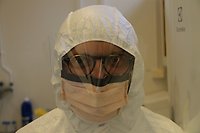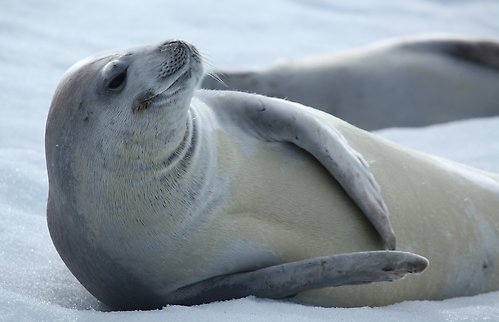
Morten Tange Olsen

Morten Tange Olsen
Department visited:
Department of Bioinformatics and Genetics
How long will you stay at the museum, and what will you be working with?
I stayed at the museum for three weeks in May 2015. My research focuses on the environmental and genomic factors that govern host-pathogen dynamics. Morbilliviruses frequently switch host species and vary remarkably in pathogenicity, causing little or no mortality in some species and dramatic mass mortality in others. I analyse samples from past epizootics of phocine distemper virus (PDV) and canine distemper virus (CDV) in northern and southern hemisphere seal species, to investigate the evolutionary interplay between host genetics and immune function.
What is the major objective to achieve during your stay at the museum?
The objective is to perform targeted sequencing of selected genes (SLAM, Nectin4 and CD147) in samples from the museum’s outstanding collection of Antarctic seal specimens. The three genes are known receptors of morbilliviruses in humans (measles) and dogs (canine distemper), and may be associated with morbillivirus susceptibility in seals. By sequencing these genes in historic and contemporary samples from Antarctic seals, I hope to shed light on the evolution of the genes.
What attracted you to apply for a SYNTHESYS grant, and in particular for SYNTHESYS grant to visit NRM?
The NRM hosts a unique collection of Antarctic seal specimens, including ancient/historic samples, as well as state-of-the-art laboratory and analytical facilities for processing of ancient and historic DNA.
Which university are you from, and what is your position and daily work there?
I am assistant professor and curator of marine mammals at the Natural History Museum of Denmark at the University of Copenhagen. My daily work is associated with using genetic and ecological techniques to understand marine mammal evolution and ecology.
What is your experience with the visiting department, the collections and the museum?
Everybody have been very helpful and arranged for a perfect start-up of the project
Did you have time to look around in Stockholm, or if you plan to do so, what do you intend to visit?
I went to Djurgården and Skansen, and spent time in downtown Stockholm. It is a very beautiful and inviting city.
Project summary
Emerging infectious diseases, such as Ebola, HIV, and influenza constitute a pressing problem to the health of humans, domestic animals and wildlife, can have wide-ranging consequences for economy and biodiversity conservation, and often draw significant scientific and public interest.
Despite this, drivers of disease infection, spread and evolution are poorly understood, which has implications for surveillance, predicting impacts and planning response to novel diseases.
The Phocine Distemper Virus (PDV, the seal plague) is a morbillivirus typically found in Arctic seals, among which it appears to be wide-spread, but associated with minor mortality rates.
On at least two occasions, in 1988 and 2002, PDV shifted host and geographical range, emerging in Denmark and spreading among the European harbour seal populations, causing among the most severe wildlife mass mortalities ever recorded.
A very closely related virus, the Canine Distemper Virus (CDV), typically infect dogs and other terrestrial carnivores, but have also resulted in at least three mass mortalities among seals in Antarctic, the Caspian Sea and Lake Baikal, with mortalities likely in the 100s of thousands. The frequent host switch and remarkable variations in mortality of PDV and CDV, causing little or no mortality in some seal species and dramatic mass mortality in others, make the two viruses highly interesting.
The project will conduct genetic analyses of seals from the northern and southern hemisphere in order to find and describe the genes responsible for PDV and CDV resistance and susceptibility in seals. This is not only important for understanding the background of seal mass mortalities, but also for understanding the patterns of infection, transmission and mortality of similar viruses, such as measles in humans, as well as other infectious diseases.



